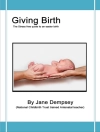There are many forms of anxiety disorder, including General Anxiety
Disorder (GAD), Panic Attacks, Phobias (including social anxiety),
Obsessive Compulsive Disorders, Post-Traumatic Stress Disorder, and
Acute Stress Disorder. Even in their most mild forms, these
disorders can be troubling and exhausting – at worst they can
severely disable a person’s ability to function in day-to-day
life. Severe anxiety and phobic disorders affect 18% of the UK
population. (nopanic.org.uk)
Symptoms of anxiety range from the mental and emotional –
depression, having difficulty concentrating, losing patience easily
– to the physical – excessive thirst, headaches, pins
and needles, and more (www.bbc.co.uk) Often the problem is
self-feeding – people try to keep things under control whilst
simultaneously worrying about being anxious all the time, and the
cycle goes on. Psychotherapy, medication and self help are the key
treatments for anxiety – however, as many people either
don’t have access to, or choose not to take, professional
treatment, self help is the key for a majority of sufferers. A
Dummies book on the subject will present the facts without the
jargon, and help people find the trustworthy guidance they
need.
Зміст
Introduction.
Part I: Detecting and Exposing Anxiety.
Chapter 1: Analysing and Attacking Anxiety.
Chapter 2: Examining Anxiety: What’s Normal, What’s
Not.
Chapter 3: Overcoming Obstacles to Change.
Chapter 4: Watching Worries Ebb and Flow.
Part II: Understanding Thought Remedies.
Chapter 5: Becoming a Thought Detective.
Chapter 6: Changing Your Anxiety – Provoking
Assumptions.
Chapter 7: Watching Out for Worry Words.
Part III: Acting Against Anxiety.
Chapter 8: Facing Fear One Step at a Time.
Chapter 9: Simply Simplifying Your Life.
Chapter 10: Getting Physical.
Chapter 11: Sleep, Sweet Sleep.
Part IV: Focusing on Feeling.
Chapter 12: Relaxation: The Five-Minute Solution.
Chapter 13: Creating Calm in Your Imagination.
Chapter 14: Relieving Anxiety with Herbs and Dietary
Supplements.
Chapter 15: Prescribing Peacefulness.
Chapter 16: Practising Mindful Acceptance.
Part V: Helping Others with Anxiety.
Chapter 17: Helping Your Children Fight Anxiety.
Chapter 18: Coping with Your Partner’s Anxiety.
Part VI: The Part of Tens.
Chapter 19: Ten Ways to Stop Anxiety Quickly.
Chapter 20: Ten Anxiety Busters That Just Don’t Work.
Chapter 21: Ten Ways to Deal with Relapse.
Chapter 22: Ten Signs That You Need Help – and Where to
Get It.
Appendix: Resources for You.
Index.
Про автора
Elaine Iljon Foreman is an Associate Fellow of the British Psychological Society who has researched and treated anxiety and phobias for over 25 years.
Charles H Elliott, Ph D, and Laura L Smith, Ph D, are clinical psychologists












